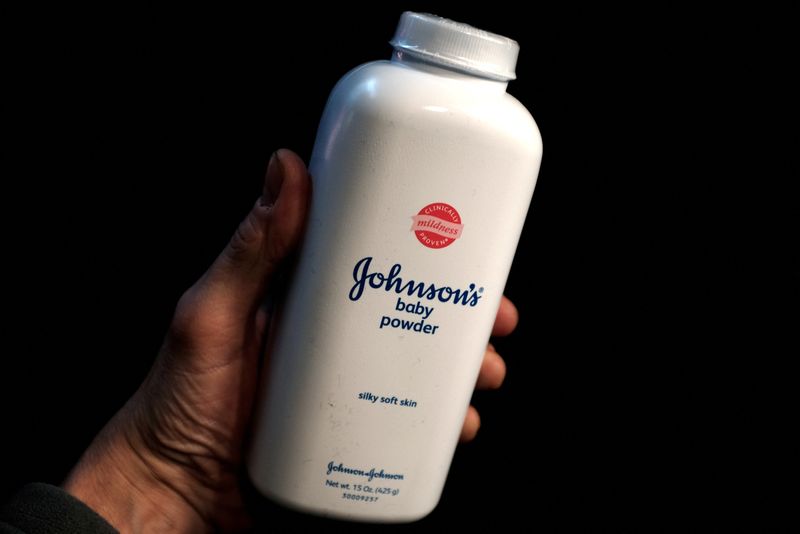J&J subsidiary files for bankruptcy to advance $10 billion talc settlement

By Dietrich Knauth
(Reuters) -A Johnson & Johnson (NYSE:JNJ) subsidiary filed for bankruptcy for a third time on Friday as the healthcare giant seeks to advance an approximately $10 billion proposed settlement that would end tens of thousands of lawsuits alleging that the company’s baby powder and other talc products caused cancer.
J&J faces lawsuits from more than 62,000 claimants who alleged that its baby powder and other talc products were contaminated with asbestos and caused ovarian and other cancers. To stop those lawsuits, J&J subsidiary Red River Talc filed for bankruptcy protection in Houston bankruptcy court.
The company has denied the allegations and has called its products safe.
Erik Haas, J&J’s worldwide vice president of litigation, said on Friday that the settlement was “fair and equitable to all parties” and that 83% of current talc claimants had voted for it.
After being rebuffed twice by federal courts, New Brunswick (NYSE:BC) New Jersey-based J&J is attempting again to end the litigation in a so-called “Texas two-step” bankruptcy.
The “two-step” maneuver involves offloading its talc liability onto a newly created subsidiary that then declares Chapter 11, a type of bankruptcy that involves a reorganization of assets and debts under court supervision. The goal is to use the proceeding to force all plaintiffs into one settlement, without requiring J&J itself to file for bankruptcy.
Bankruptcy judges can enforce global settlements that permanently halt all related lawsuits and forbid new ones.
Outside of bankruptcy, any settlement J&J reached with some claimants would still leave holdouts or future plaintiffs with the right to sue – and leave the company exposed to potential multibillion-dollar verdicts that encouraged it to use a two-step in the first place.
To improve its chances in a third bankruptcy effort, J&J asked plaintiffs to vote on its proposed deal ahead of time to ensure that it has enough support for its plan to succeed. J&J needed more than 75% to back the plan for a bankruptcy judge to impose the deal on all plaintiffs.
J&J’s third attempt at a bankruptcy settlement also differs from its previous efforts in part because it focuses only on ovarian and other gynecological cancer claims, building on J&J’s previous settlements with state attorneys general and people who had sued after developing mesothelioma, a rare form of cancer linked to asbestos exposure.
J&J’s proposed settlement would pay talc claimants about $10 billion over 25 years. The present value of the settlement is roughly $8 billion after J&J recently agreed to kick in an additional $1.1 billion to the settlement fund and pay $650 million in legal fees to attorneys that had previously opposed the settlement offer.
The company has been engaged in a bitter fight with lawyers opposing its third attempt to settle the litigation through this maneuver.
Its bankruptcy strategy still faces legal hurdles. These include a June U.S. Supreme Court decision involving Purdue Pharma’s bankruptcy, court orders dismissing its previous efforts and proposed federal legislation aimed at preventing financially healthy companies like J&J from benefiting from bankruptcy protection.






